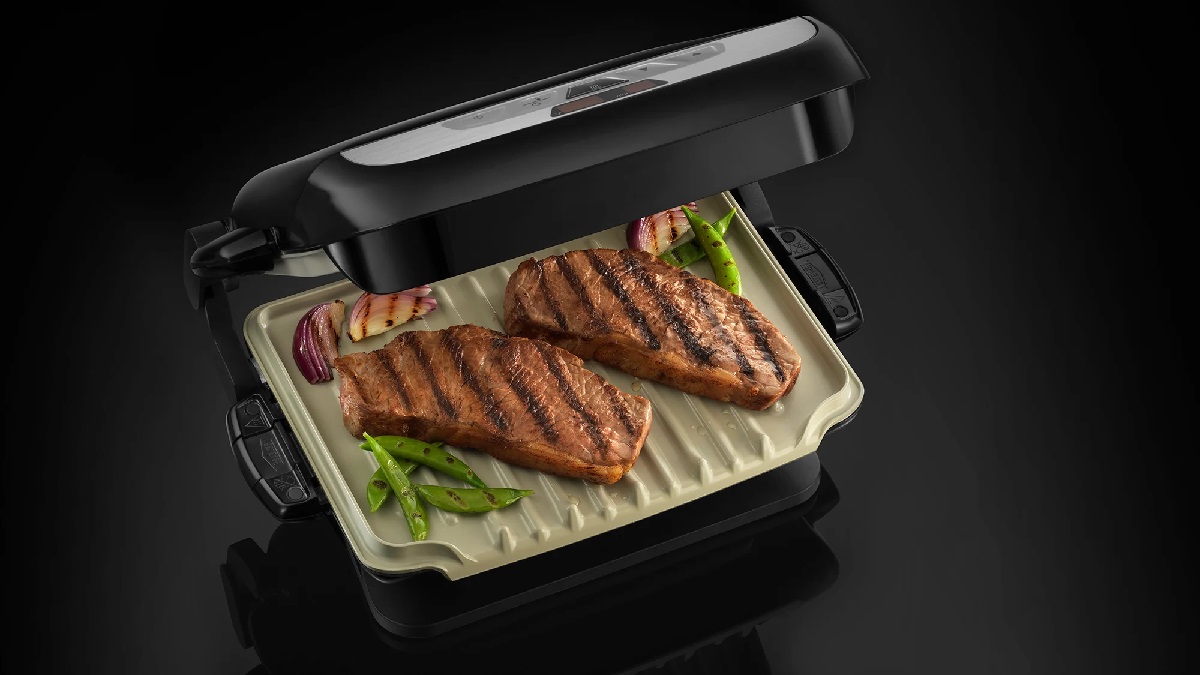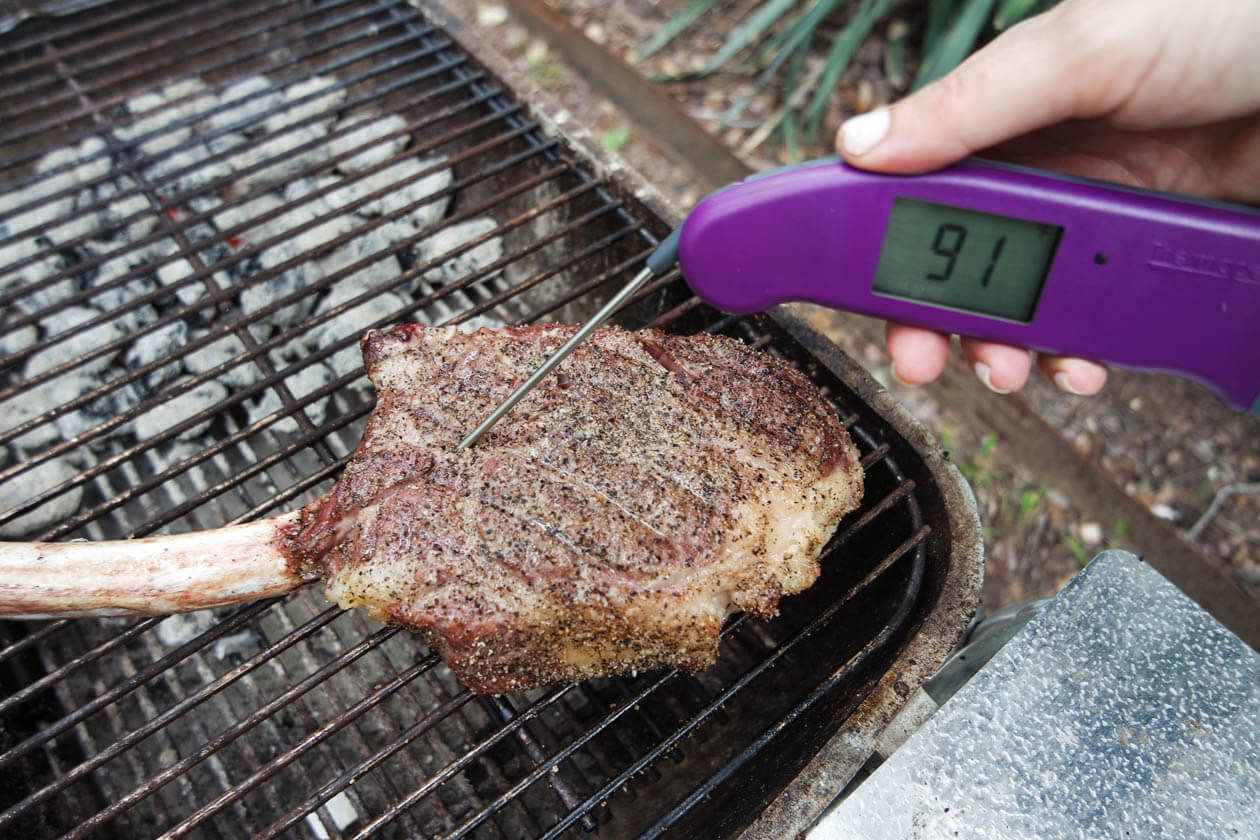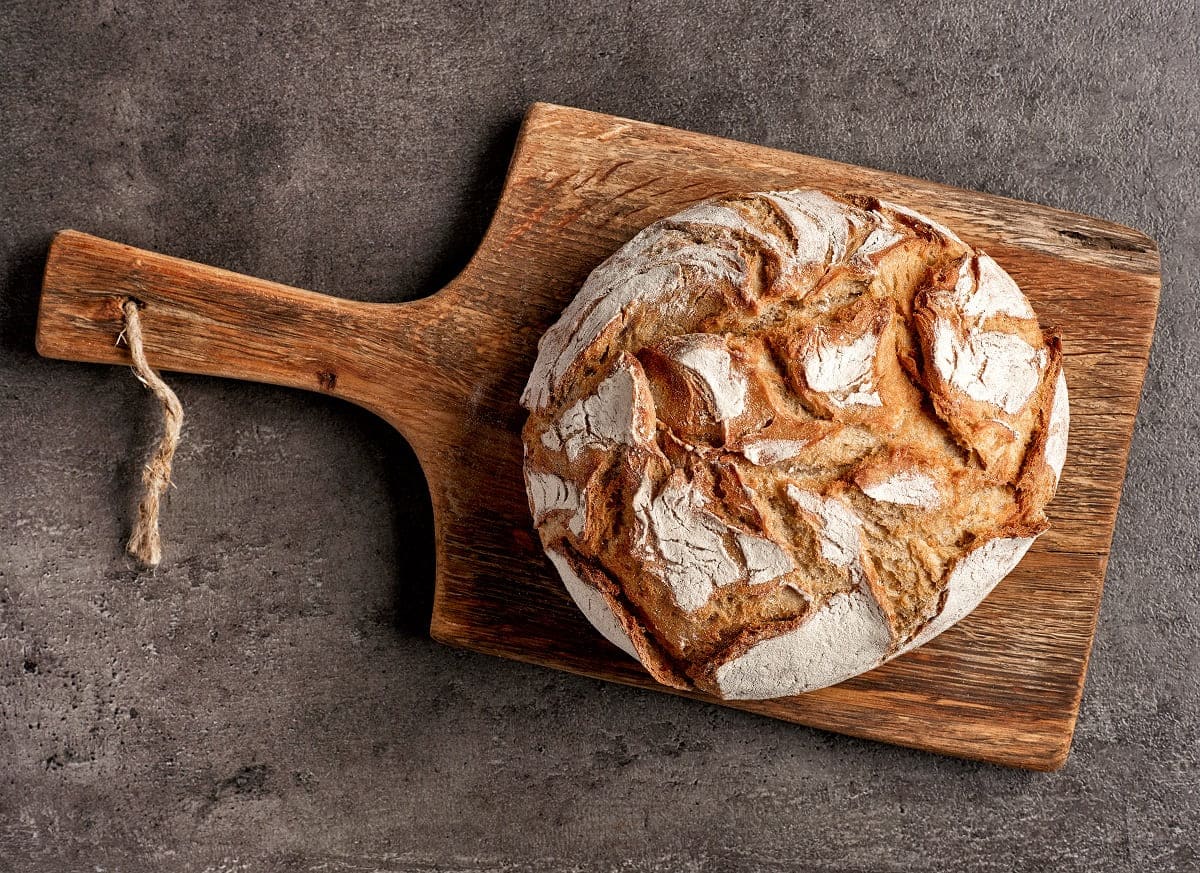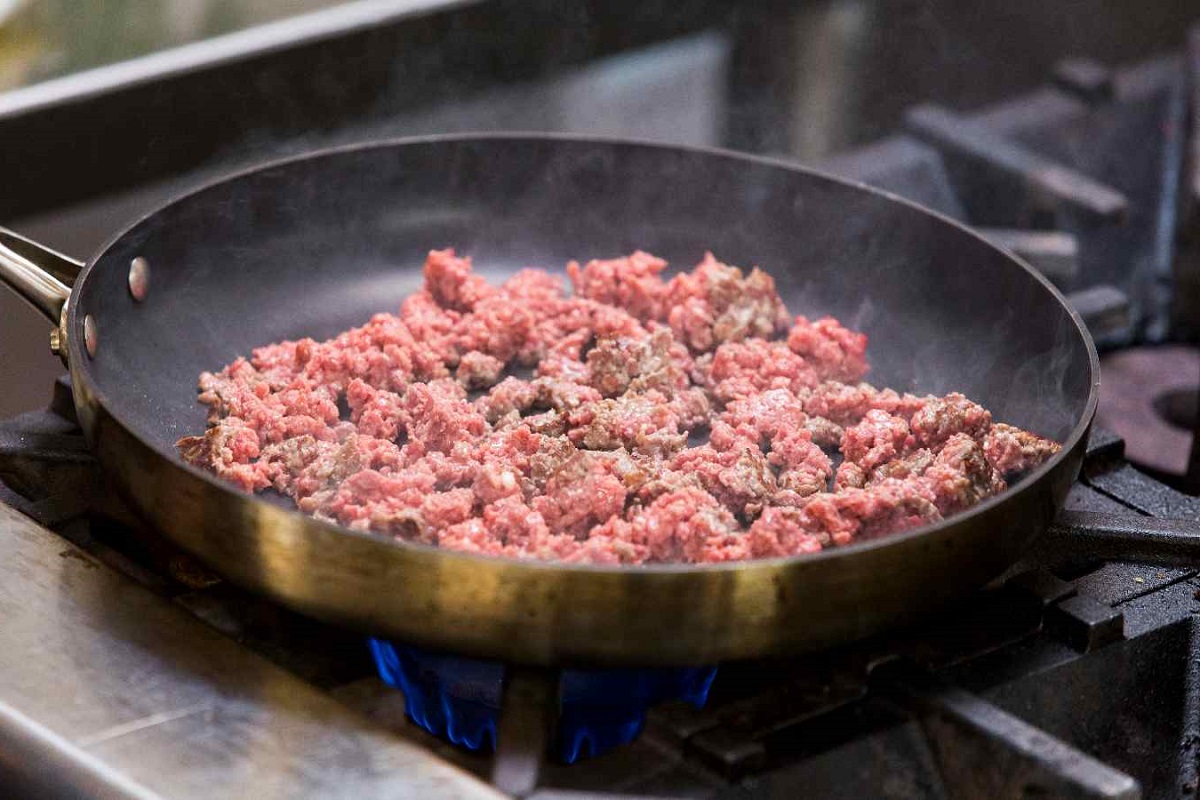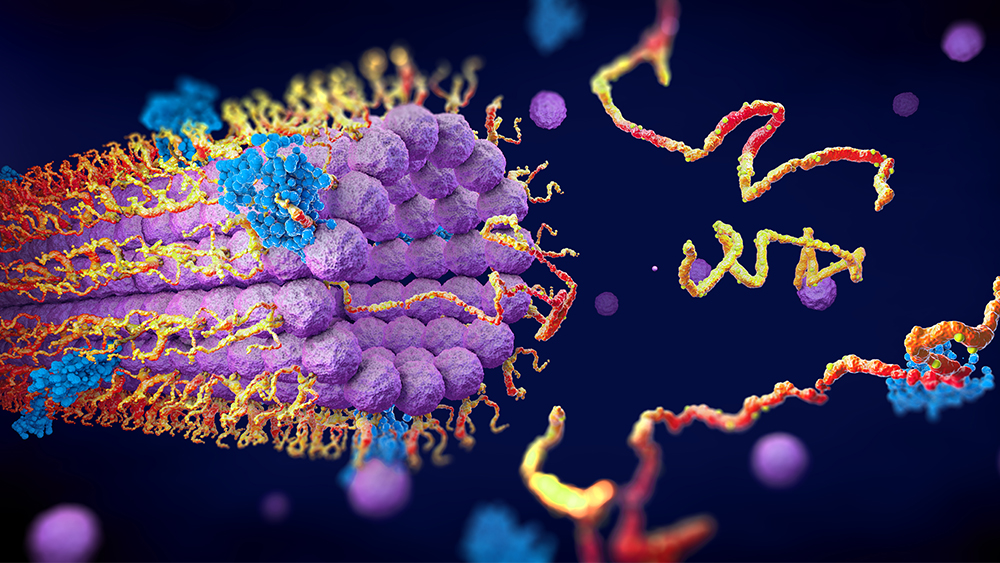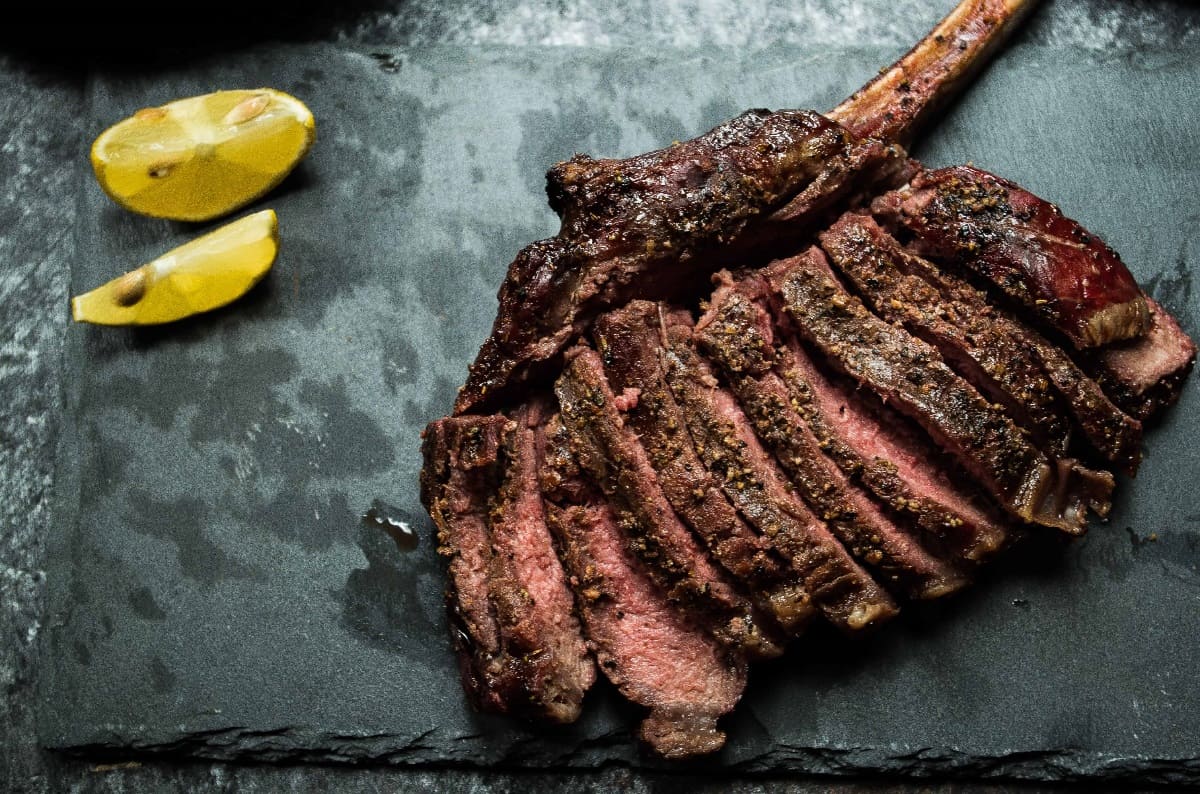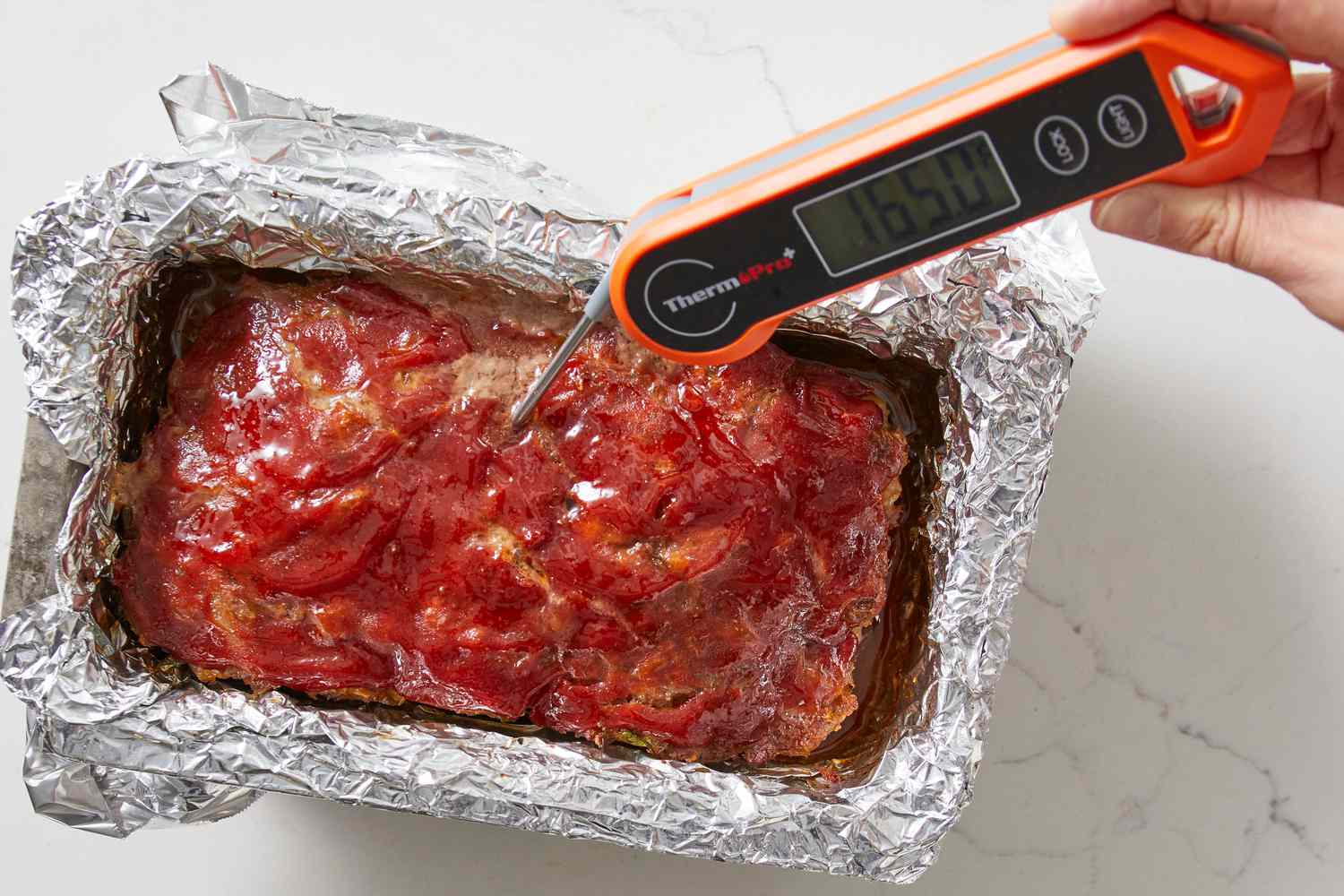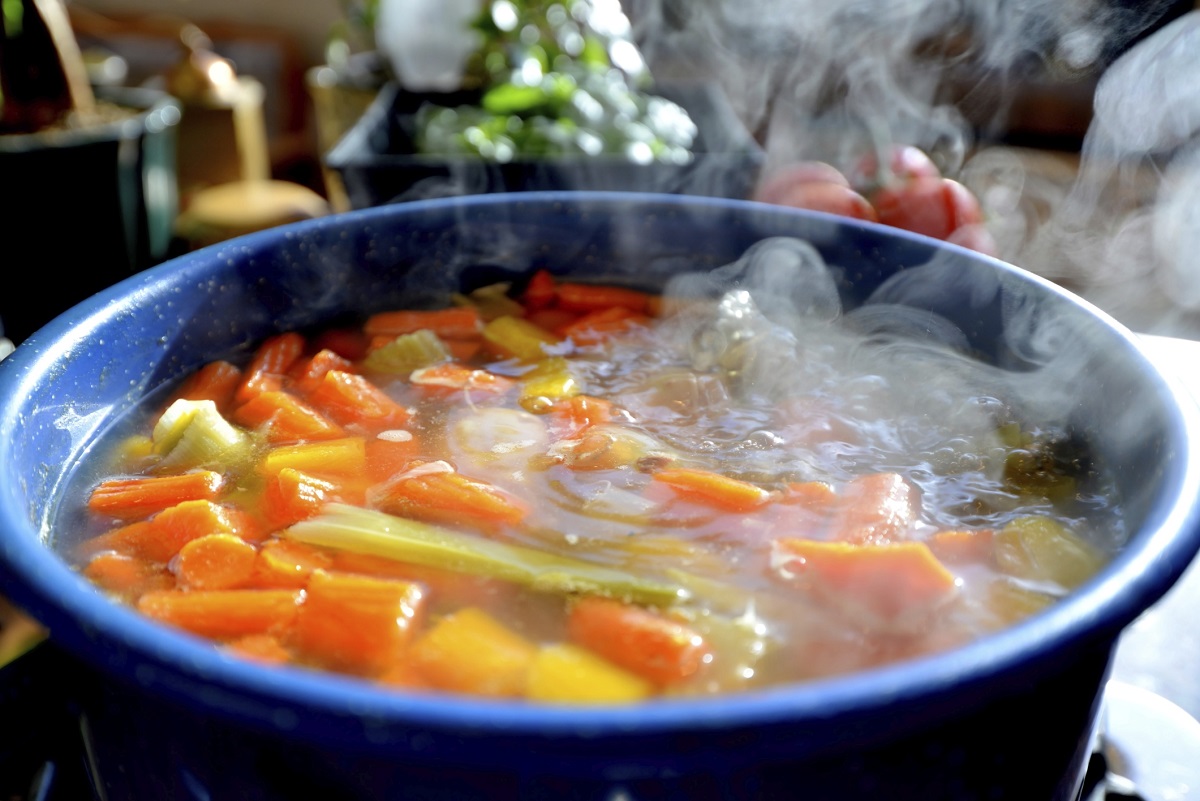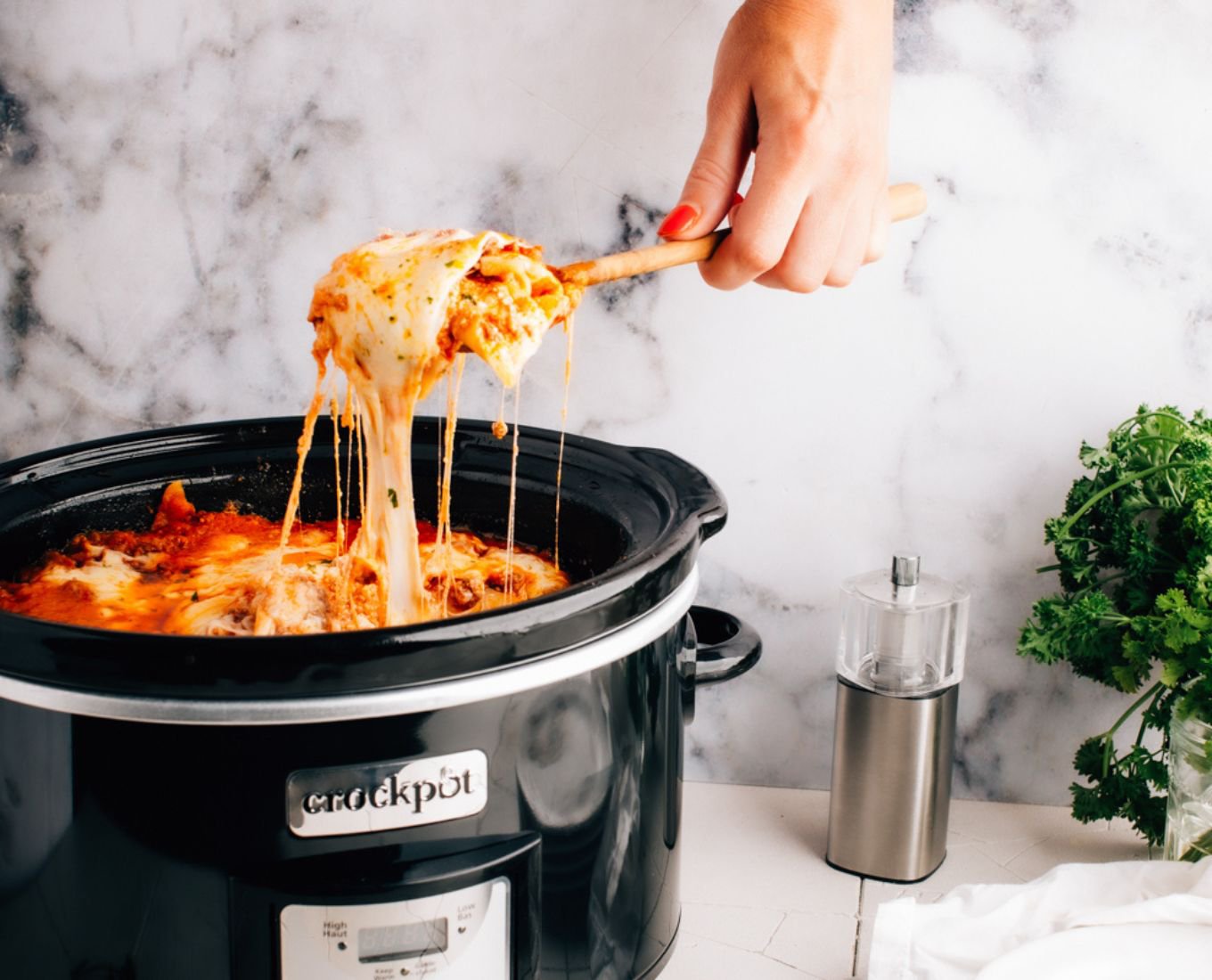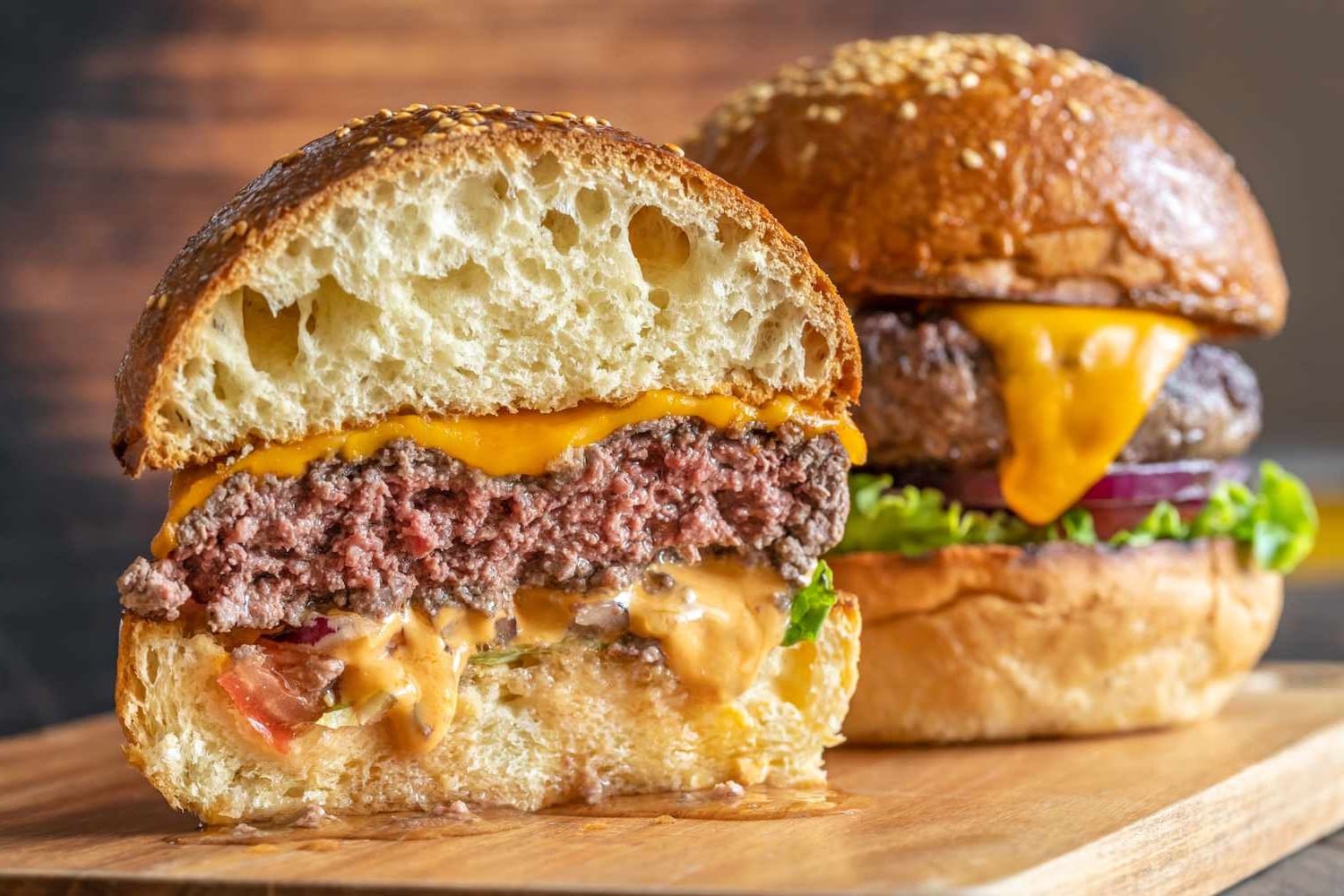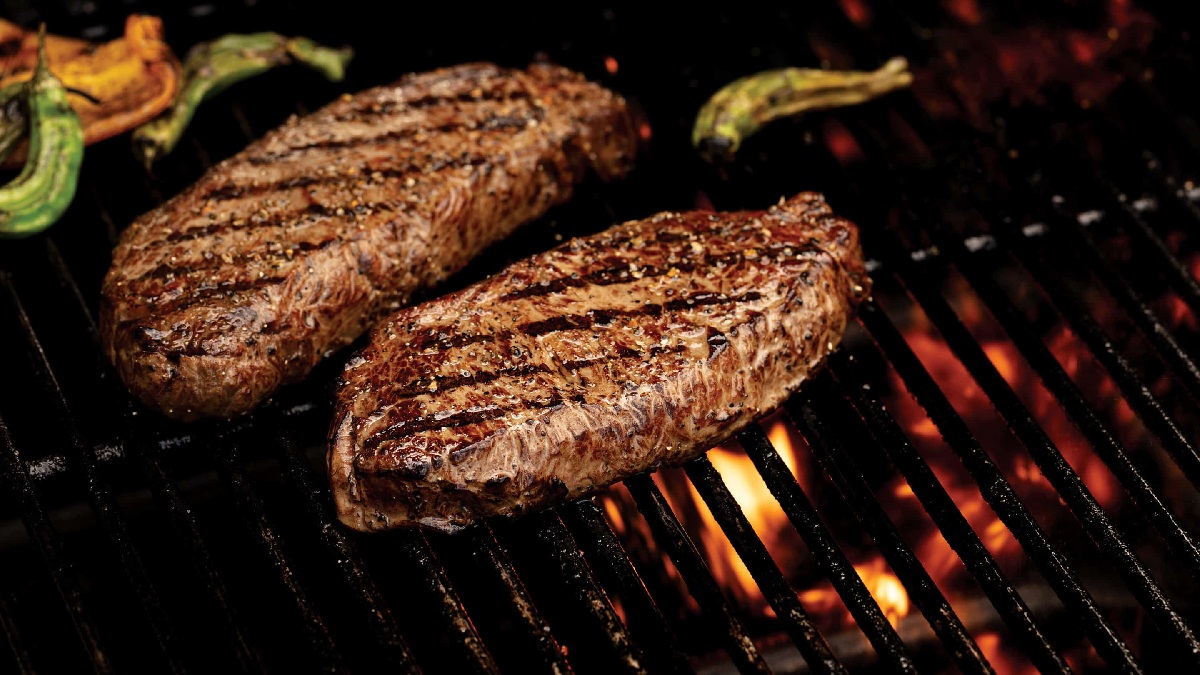Home>Culinary & Beverages>Optimal Temperature For A Medium Rare Steak
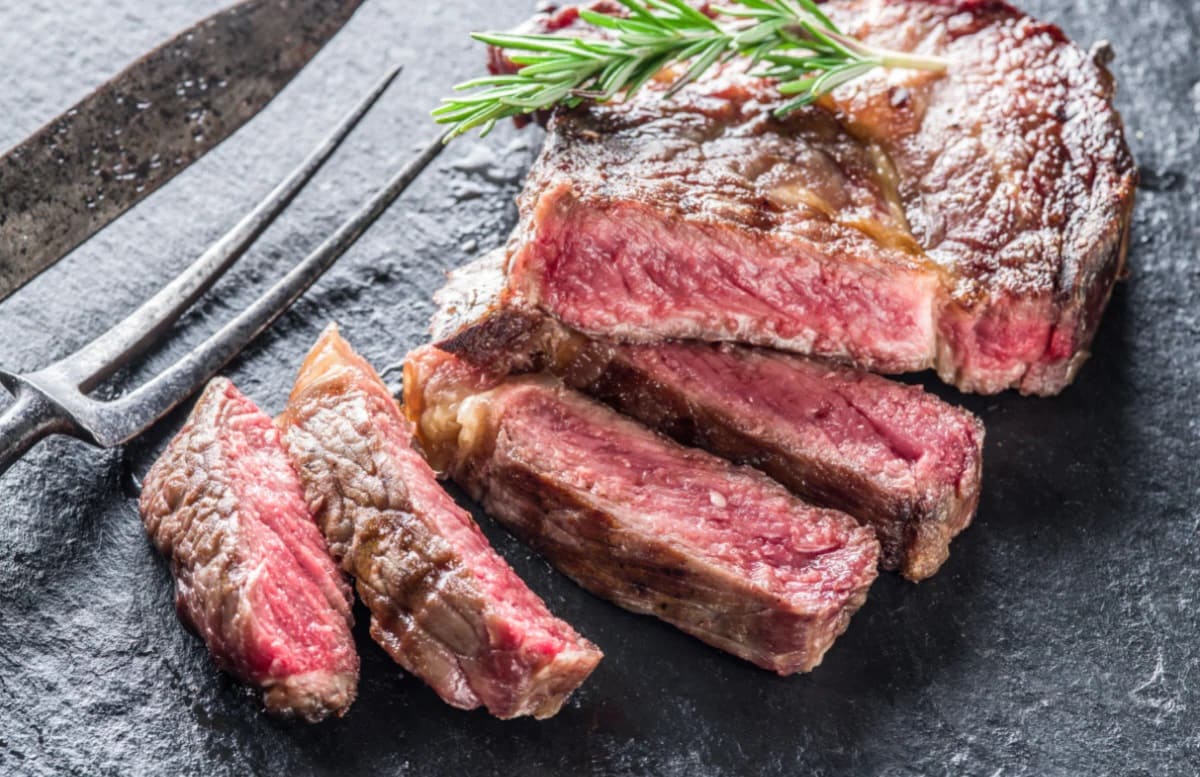

Culinary & Beverages
Optimal Temperature For A Medium Rare Steak
Published: February 22, 2024
Discover the perfect temperature for cooking a mouthwatering medium rare steak. Elevate your culinary skills with our expert tips and techniques. Explore more culinary and beverage insights.
(Many of the links in this article redirect to a specific reviewed product. Your purchase of these products through affiliate links helps to generate commission for Temperatures.com, at no extra cost. Learn more)
Table of Contents
The Science Behind Medium Rare Steak
Cooking a medium rare steak to perfection is a delicate art that requires a deep understanding of the science behind meat preparation. The term "medium rare" refers to the level of doneness that results in a steak being cooked to an internal temperature of 130-135°F (54-57°C), with a warm red center. Achieving this ideal state involves a complex interplay of factors that influence the steak's texture, flavor, and overall palatability.
Maillard Reaction and Flavor Development
One of the key scientific processes that occur during the cooking of a medium rare steak is the Maillard reaction. This chemical reaction takes place between the amino acids and reducing sugars present in the meat when exposed to high heat. As the steak cooks, the Maillard reaction leads to the formation of a complex array of flavorful compounds, resulting in the desirable brown crust on the exterior of the steak. This process not only enhances the taste but also contributes to the appealing aroma that tantalizes the senses.
Protein Denaturation and Texture
The proteins in the steak undergo denaturation as they are subjected to heat. This process causes the proteins to unfold and reorganize, leading to changes in the steak's texture. In the case of a medium rare steak, the denaturation of proteins is carefully controlled to achieve a tender and juicy consistency while retaining a slight resistance to the bite. The precise temperature control is crucial in preserving the steak's natural juices and ensuring a succulent mouthfeel.
Fat Rendering and Juiciness
Another critical aspect of the science behind medium rare steak is the rendering of fat. As the steak cooks, the intramuscular fat begins to melt, releasing flavorful lipids that contribute to the overall juiciness of the meat. The optimal temperature for a medium rare steak allows for the gradual rendering of fat, resulting in a moist and luscious eating experience without excessive greasiness.
Understanding the intricate scientific processes that govern the preparation of a medium rare steak empowers chefs and home cooks to master the art of achieving the perfect balance of flavor, texture, and juiciness. By harnessing the principles of the Maillard reaction, protein denaturation, and fat rendering, one can elevate the culinary experience and savor the unparalleled delight of a flawlessly cooked medium rare steak.
Factors Affecting the Optimal Temperature
The attainment of the ideal temperature for a medium rare steak is influenced by several crucial factors that directly impact the outcome of the cooking process. Understanding these factors is essential for achieving the perfect balance of doneness, flavor, and texture in a medium rare steak.
Read more: Perfecting The Art Of Cooking A Medium Steak
1. Cut and Thickness of the Steak
The cut and thickness of the steak play a pivotal role in determining the optimal cooking temperature. Thicker cuts require a lower heat and longer cooking time to ensure that the interior reaches the desired medium rare temperature without overcooking the exterior. Conversely, thinner cuts necessitate a higher heat for a shorter duration to achieve the same level of doneness.
2. Initial Steak Temperature
The starting temperature of the steak before it is placed on the cooking surface significantly influences the cooking process. A steak that is closer to room temperature will cook more evenly, allowing for better control over the internal temperature. This is particularly important for achieving a uniform medium rare doneness throughout the steak.
3. Cooking Method and Equipment
The choice of cooking method and equipment, whether it's grilling, pan-searing, or broiling, directly impacts the optimal temperature for a medium rare steak. Each method requires precise heat management to ensure that the steak reaches the desired internal temperature while developing the characteristic sear or crust on the exterior.
4. Resting Time and Carryover Cooking
The resting time after the steak is removed from the heat source is a critical factor in achieving the optimal temperature for a medium rare steak. During this resting period, the residual heat continues to gently raise the internal temperature of the steak, a phenomenon known as carryover cooking. Factoring in this additional temperature increase is essential to prevent the steak from surpassing the medium rare range during the resting phase.
5. Variability in Cooking Surfaces
The type and condition of the cooking surface, whether it's a grill grate, cast-iron skillet, or broiler pan, can introduce variability in heat distribution. Understanding the nuances of the chosen cooking surface is essential for making real-time adjustments to maintain the optimal temperature and ensure consistent results across different cooking sessions.
By taking into account these factors, chefs and home cooks can navigate the intricacies of temperature control and tailor their cooking approach to achieve the perfect medium rare steak. The harmonious interplay of these variables ultimately determines the success of the culinary endeavor, culminating in a delectable medium rare steak that delights the senses and satisfies the palate.
Tips for Achieving the Perfect Medium Rare Steak
-
Select the Right Cut: Opt for well-marbled cuts such as ribeye or New York strip, as the intramuscular fat enhances flavor and juiciness. Thicker cuts, around 1.5 inches, are ideal for achieving a uniform medium rare doneness.
-
Bring the Steak to Room Temperature: Allow the steak to sit at room temperature for 30-60 minutes before cooking. This promotes even cooking and reduces the risk of overcooking the exterior while waiting for the interior to reach the desired temperature.
-
Season Generously: Prior to cooking, season the steak liberally with kosher salt and freshly ground black pepper. The salt not only enhances the steak's natural flavors but also aids in the development of a savory crust during cooking.
-
Preheat the Cooking Surface: Whether using a grill, cast-iron skillet, or broiler, ensure that the cooking surface is thoroughly preheated. This initial burst of high heat is essential for creating the Maillard reaction, which contributes to the steak's rich flavor and appealing color.
-
Use a Meat Thermometer: Invest in a reliable meat thermometer to accurately monitor the steak's internal temperature. Insert the thermometer into the thickest part of the steak, away from any bone, for an accurate reading.
-
Monitor Cooking Time: Keep a close eye on the steak as it cooks, aiming to achieve a caramelized crust on both sides while allowing the interior to reach the desired medium rare temperature.
-
Rest the Steak: Once the steak reaches the target temperature, remove it from the heat and let it rest for 5-10 minutes. This crucial step allows the juices to redistribute, resulting in a more succulent and flavorful eating experience.
-
Slice and Serve: After resting, slice the steak against the grain to maximize tenderness. Serve immediately and savor the moment as you indulge in the perfect medium rare steak.
By following these expert tips, you can elevate your steak-cooking prowess and consistently produce medium rare steaks that are a testament to culinary excellence.
Importance of Resting the Steak
Resting the steak after it has been cooked to the desired level of doneness is a crucial yet often overlooked step in the culinary process. This period of rest, typically lasting 5-10 minutes, holds immense significance in ensuring that the steak delivers an exceptional dining experience. The importance of resting the steak lies in the transformative effects it imparts on the meat, influencing its texture, juiciness, and overall palatability.
During the cooking process, the intense heat causes the muscle fibers in the steak to contract, leading to the migration of moisture towards the center of the meat. This phenomenon is exacerbated by the high temperatures used to achieve the coveted Maillard reaction and caramelization on the exterior of the steak. However, when the steak is removed from the heat source and allowed to rest, a remarkable reversal occurs.
The resting period allows the muscle fibers to relax gradually, enabling the redistributed moisture to reabsorb throughout the steak. As a result, the juices, which had been concentrated at the center, redistribute themselves evenly, yielding a more succulent and tender texture. This reabsorption of moisture also contributes to a more uniform level of doneness, ensuring that each bite of the steak is consistently flavorful and juicy.
Furthermore, resting the steak facilitates a process known as carryover cooking. Even after being removed from the heat, the residual heat within the steak continues to gently raise its internal temperature. By factoring in this carryover cooking during the resting phase, the steak can be cooked to the precise level of doneness, such as medium rare, without the risk of overcooking.
In addition to the physical transformations that occur during the resting period, there is a sensory aspect to consider. The flavors within the steak undergo a harmonization process as the rest allows the various components to meld together, resulting in a more cohesive and nuanced taste profile. This amalgamation of flavors enhances the overall dining experience, elevating the steak from a mere culinary creation to a symphony of taste and texture.
In essence, the importance of resting the steak cannot be overstated. It is the final act in the culinary orchestration, allowing the steak to reach its full potential and delight the senses of those fortunate enough to partake in its savory splendor. By honoring this critical phase of the cooking process, chefs and home cooks alike can ensure that their medium rare steaks are nothing short of extraordinary, embodying the pinnacle of culinary artistry.
Serving and Enjoying a Medium Rare Steak
Serving and savoring a medium rare steak is a culmination of the artistry and precision that goes into its preparation. As the perfectly cooked steak makes its way to the dining table, a symphony of anticipation and delight unfolds, setting the stage for a truly memorable culinary experience.
The presentation of the medium rare steak is an integral part of the dining ritual. Placing the steak on a clean, well-chosen serving platter or plate not only showcases the culinary masterpiece but also sets the tone for the sensory journey that is about to unfold. The vibrant hues of the medium rare interior, juxtaposed against the caramelized exterior, create a visual spectacle that captivates the eyes and ignites the appetite.
Accompaniments play a pivotal role in enhancing the enjoyment of a medium rare steak. Whether it's a classic pairing of garlic-infused mashed potatoes, a vibrant medley of roasted vegetables, or a crisp, refreshing salad, the side dishes are carefully curated to complement and elevate the flavors of the steak. Each element on the plate harmonizes to create a symphony of tastes, textures, and aromas, enriching the overall dining experience.
The act of slicing into a perfectly cooked medium rare steak is a moment of anticipation and revelation. The first incision, revealing the tender, rosy-pink interior, is a testament to the culinary mastery that has been achieved. Each succulent slice, imbued with the essence of the Maillard reaction and the artful interplay of flavors, beckons the diner to embark on a gastronomic journey unlike any other.
As the first bite is savored, the culmination of the cooking process unfolds on the palate. The tender, juicy texture, the nuanced interplay of savory and umami notes, and the lingering richness of the meat coalesce to create a sensory tapestry that transcends mere sustenance. With each subsequent bite, the flavors evolve, revealing new dimensions and nuances that captivate the senses and invite the diner to immerse themselves fully in the culinary opus that is the medium rare steak.
The enjoyment of a medium rare steak extends beyond the physical act of eating; it is a celebration of culinary excellence, a testament to the art of cooking, and a shared experience that unites individuals in the appreciation of exceptional food. It is a moment to be savored, a memory to be cherished, and a reminder of the profound pleasure that can be derived from a perfectly executed culinary creation.
In essence, serving and savoring a medium rare steak is a symphony of sensory delight, a testament to the artistry of cooking, and a celebration of the culinary journey that culminates in a singular moment of pure gastronomic bliss.
